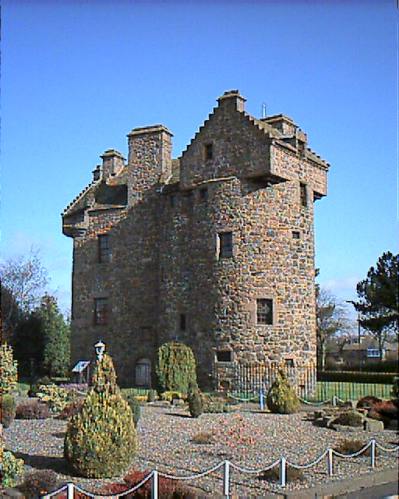| The external features of the castle |
Claypotts Castle
A brief history
Claypotts Castle is an outstanding example of 16th-century Scottish architecture. It is a tower house, built by John Strachan between 1569 and 1588 on lands that previously belonged to Lindores Abbey, across the River Tay in Fife. the castle is one of the most complete examples of a `Z-plan' tower house, with round towers built at diagonally opposite corners of a rectangular block. This Z-plan arrangement allowed all the approaches to the castle's walls to be defended.
Although little is recorded about everyday life at Claypotts, a documentary reference in 1594 tells us that the castle was being looked after by three women, and there were four ploughman and a shepherd also living on the estate. The reference describes wheat being grown and barley, oats and peas being stacked in a barnyard. there were also oxen, cattle, sheep and horses being kept.
In 1601 the castle and the surrounding estate were sold to a local landowner, Sir William Graham of Ballunie. Fifteen years later, his son David sold them again, to Sir William Graham of Claverhouse. David was probably the last of the owners of Claypotts to actually live there. In 1678, Sir William's great-grandson, John Graham of Claverhouse (better known as `Bonnie Dundee'), inherited the castle, although he died in 1689 at the battle of Killiecrankie and the castle passed into the hands of the Crown. The castle was then granted in 1694 to James, second Marquis of Douglas, and eventually became the property of the earls of Home in the 19th century. The Earl of Home placed the castle into state care in 1926 and it is now looked after by Historic Scotland.
